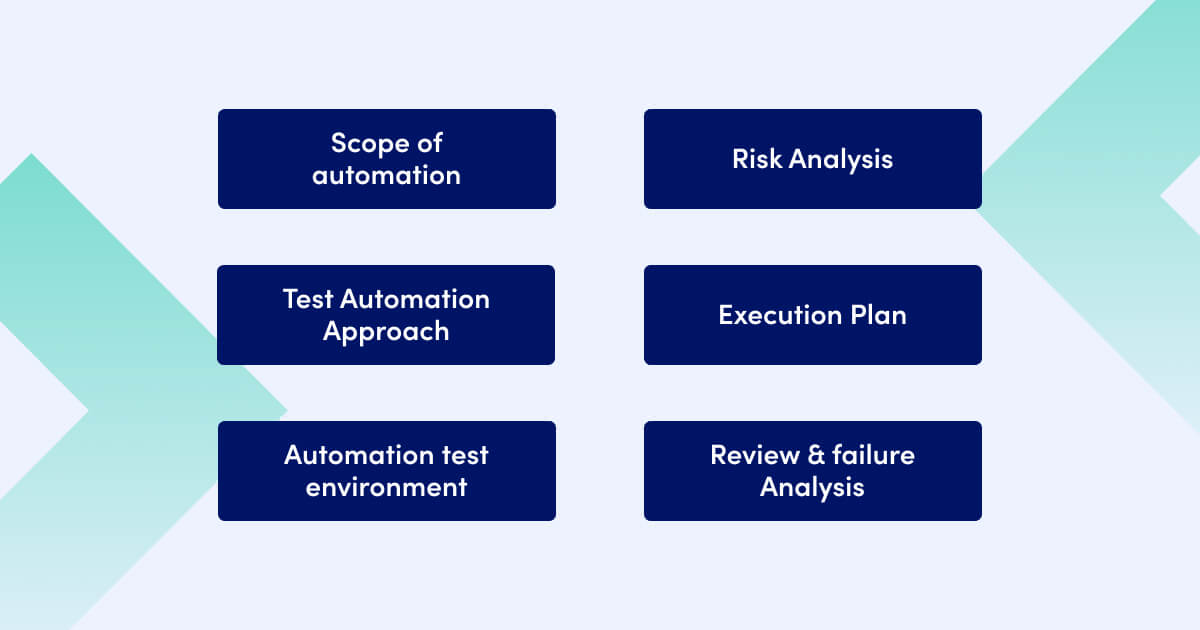
Test automation strategy – best practices
Test automation takes away the burden of performing repetitive, rule-based tasks manually. This enables the testing teams to run testing faster and increase test coverage. According to Gartner, “automated tests provide consistent results and data points”. The benefits of automated testing are numerous, including:
- Ease of maintenance
- Cost savings: ability to use resources efficiently in off-peak hours
- Capability to create reports based on executed tests
- Reliability, resulting from increased test coverage
- Alignment with DevOps and agile practices
- Accelerated testing
- Additional functionalities for: test planning, defect management, test case management, etc.
It is estimated that by 2024, 75% of large enterprises will be using (at least four) low-code development tools for their IT app development (Gartner, 2019).
Types of test automation
Depending on your testing project and your client’s business needs, there are a number of testing types that can be automated:
- Functional testing: checks whether all components of a product/ software work correctly. It focuses on the interface and ensures that user requirements are met.
- Integration testing: ensure that all application modules communicate as required
- Smoke testing: tests the most critical functionalities of the software to make sure they work correctly.
- Unit testing: enable the testing teams to check the individual units of source code and check if they are working as intended
- Regression testing: aims to check for any bugs that might have been introduced with recent code changes/ new functionalities/ features. It check the existing components of the application.
Why automate testing?
Many companies are already using test automation – some to a large extent and some still depend mostly on manual testing. It might be because they are not sure how to properly leverage the benefits of test automation for their software development processes.
Although the initial investment (both time and effort) into introducing test automation is significant, if you choose the appropriate automation testing tool, the positive ROI happens more quickly. Also, when you start out on a small scale, financial commitment is minimal.
In the long way, automated testing speeds up things as manual testing consumes gigantic amounts of time. You should also consider test automation if you want to eliminate human error if you are running the same operations again and again. The goal of test automation is to increase both the effectiveness and efficiency of testing. This means with automated testing, you reduce the number of test cases that testers need to perform manually and also save time and effort on running any test cases that are challenging or too difficult to be done manually. With automated testing, you gain:
- Increased coverage
- Faster feedback and results
- Better (and faster) ROI on testing
- Business return after initial investment
Every adoption of a new software is a difficult decision. Therefore, think carefully if you need automated testing and for which parts of the testing project it is most applicable. It will dramatically impact on the quality of the testing process, saving you time and resources and – ultimately – giving you better quality software. However, you cannot expect that the adoption of the automated testing tool is enough to yield the results that you want and which the business requires. That is why if you opt for test automation, make sure that you follow this decision with making a thorough and clear test automation strategy. If planned and done right, it will guarantee the success of your testing project and that all your releases go smoothly.
When to automate testing?
There is a handful of scenarios where you might be better off running tests automatically instead of manually. Obviously, there are certain situations where automated testing will not solve all the team’s problems. The most common ones when automated testing is most viable are:
- When it is more cost-effective
- When you plan on using repetitive tests
- When there are significant time savings predicted
- When quality needs to be improved
- When tests need to be run frequently
- When multiple tests need to be run simultaneously
- When you need to measure quality metrics
What is a Test Automation Strategy?
To plan and execute automated tests, you need an automation framework first. It collects all the tools and processes which support automated testing – be it website or application testing. A significant amount of time and resources can be saved by companies investing in a testing automation framework. Once they have it, they should follow with a thorough test automation strategy.
But what exactly is a test automation strategy? It should be understood as a mini copy of your larger testing strategy. Most of the techniques, processes and tools for building the overall testing strategy will be applicable for the test automation strategy, too. That is why your test automation strategy should be on the same level as your system and performance testing. You will be using the same data points to discover what to automate, how to do it and which technology should be most helpful for the automation.
Test automation strategy should help you determine who it is that you will be testing for, what the users do, what the testers and developers do as well as define all the associated metrics.
A test automation strategy that is cost-effective and has a result-oriented approach is indispensable for the success of any test automation projects. A well-defined test automation strategy in place helps leverage businesses and keep pace with the market, avoiding any major technological fiascos.
The aim of any test automation strategy is to inform – about the risks, capabilities and functionality and subsequently, to establish a process to inform on those things in a reliable, repeatable way. As it is documented, it is also helpful for communicating testing goals and plans. For decision makers, a well-documented and described test automation strategy might serve as a starting point for a new proof-of-concept or a new technology that might be introduced in your company. And last but not least, a test automation strategy works as an auditing tools, allowing you to trace back what was done vs. what had been planned.
How to Build a Test Automation Strategy?
How to formulate a good test automation strategy? On the basis of Roger L. Marting’s strategy framework (2010, Harvard Business Review), it has been discovered that a practicable strategy should answer the 5 basic questions:
- What are the testing goals for the team and for the broader organization? How can you measure progress against these goals? How does test automation help with achieving each of these goals?
- Where will you choose test automation (depending on the options available)
- In your chosen domain, how can you use software test automation to help release better software (and beat the competitors)?
- What software testing capabilities do you need to develop and maintain (with the aim to outperform the competitors)?
- What system should you implement to maintain and build on these testing capabilities?

A test automation strategy needs to be planned thoroughly so that it does not miss any critical elements or phases. What are the steps for building a successful test automation strategy? Let’s have a look:
- Defining the scope of automation: decide on what’s most important to test. In order to do that, you need first to define the high business value test. Consider the workflows that could pose risk to business continue if they stopped working. Work closely with the business to understand which critical scenarios should be tested first and which later on. Describe the timelines and milestones for each test sprint, too.
- Determining your test automation approach: this is mainly about choosing a test automation tool. To do so, you need to understand the project requirements and what the business really needs. Shorlist the tools, based on their licensing and TCO, training and support included, tool extensibility, performance and stability. Apart from the tool, define the roles in the automation project and make sure that the automation roll-out is a well-defined and structured process.
- Setting up the test automation environment: in order to establish your automation test environment, you need to: identify the requirements of the test environment, have the required tool(s) ready and consider the data that will be incorporated into test cases as well as think of where it will be stored, if it should be masked or not and what will happen to the test data once the testing is done.
- Doing a risk analysis: for test automation project, you need to create a risk document which would include viable parameters such as a description of the risk, the risk level, provability, mitigation and the cost estimate. Mind you that as the project evolves, the risks need to be added/ removed, on an ongoing basis.
- Define the process of test execution and management: test automation strategy should outline the daily tasks and procedures related to test automation, include a set of best practices, using scheduling tools to test cases in parallel and assigning statuses to cases either passed or failed during execution.
- Running a failure analysis and reporting results: one critical part of test automation strategy is a plan for analyzing the failed test cases and resolving them. You need to outline how different errors should be handled, such as issued with the test environment, bugs in the application under test, bugs in automation scripts, etc. .
Benefits of a Test Automation Strategy
We’ve mentioned at the very beginning what the benefits of test automation strategy are. Now think what would happen if you didn’t have a test automation strategy? And what if you skip your test automation strategy? Well, you are not the first to wonder about that. As it has happened a lot of times that test automation strategy was not applied, we don’t have to predict what would happen. We know what does.
- Lack of vision: where there is no plan for action (testing), it is almost impossible to have a vision. Automation projects when it comes to the testing framework might flop-flop and deviate from the original plan. With a vision (a good test automation strategy), you have a documented way of assessing those changes as you know what the original version was to it is much easier to adapt. The automation testing strategy prevents your testing project from backfiring unexpectedly.
- No tangible business value: what is the real business value of a new test automation solution (e.g. performance or regression testing)? This question has to be asked up front. If you don’t think of it and incorporate it into your test automation strategy, the project is highly likely to be cancelled or not even approved – no demonstrated (potential) ROI is no ROI at all for the business.
- Technology efficiency loss: when you resign from establishing your test automation strategy, you risk choosing inappropriate wrong testing automation technology for your testing project. This is called a “technology efficiency loss”. The automation technology has to match the application/ software. Not having a test automation strategy written down or having an incomplete strategy around testing is likely to choose technology for a solution for which it is simply not fit.
- Being unprepared for “testing squeezes”: testing squeezes are almost a daily bread for software development. Without a good test automation strategy, it is impossible to decide on how to go about reducing the scope of the testing projects – which tests should be prioritized, what scripts should be cut and what brings the most business value. Without that understanding, you are in the dark as to what testing should look like and you risk cutting too much off the testing project.
